
Top 10 Slow Feeder Dog Bowls for Healthier Eating – 2024 Reviews & Ratings
Ensuring our canine companions maintain a healthy lifestyle is of utmost importance. A significant aspect often overlooked is their eating habits.
Enter slow feeder dog bowls – a revolutionary solution that promotes healthier eating by preventing rapid food consumption.
Let’s see the top 10 slow feeder dog bowls for 2024, providing comprehensive overviews, pros, and cons for each, ensuring you make the best choice for your furry friend’s well-being.
This post may include affiliate links.
The information provided herein is for informational purposes only. Please refer to our disclaimer for more details..
1. SodaPup Slow Feeder Dog Bowl
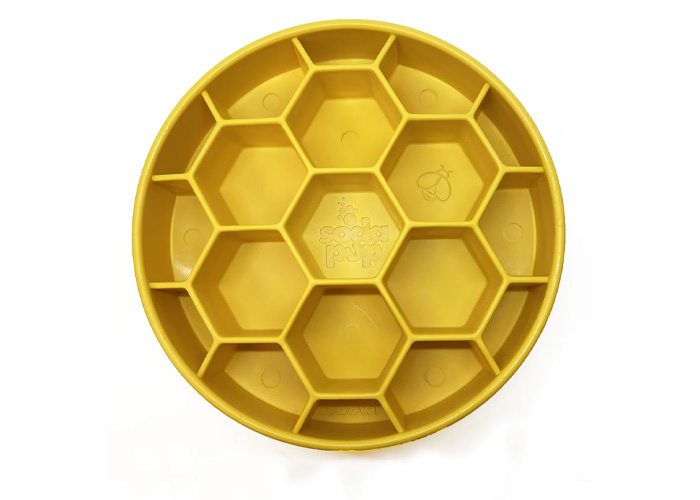
Chewy $21.99
SodaPup takes the lead with its durable rubber construction, offering various shapes and sizes to cater to different breeds.
The innovative design slows your dog’s eating pace, promoting better digestion and reducing the risk of bloat.
Pros
- Durable Rubber Construction: Ensures longevity and resistance and encourages your dog to chew.
- Variety in Shapes and Sizes: Accommodates different breeds and eating habits.
- Dishwasher Safe: Convenient for easy cleaning.
Cons
- Challenging for Some Dogs: It may be too difficult for dogs with certain health conditions or smaller breeds.
2. Outward Hound’s Interactive Slow Feeder Bowl
Chewy $11.99
Outward Hound’s Interactive slow feeder Bowl boasts a maze-like design, turning mealtime into a mentally stimulating challenge.
With a non-slip base and multiple size options, it addresses both slow eating and the convenience of use.
Pros
- Maze-Like Design: Encourages slower eating through engagement.
- Non-Slip Base: Prevents spills and mess.
- Multiple Size Options: Fits various dog breeds.
Cons
- Plastic Construction: It may not be as durable as different bowls made from other materials.
3. Leashboss Raised Pet Feeders Slow Feed Dog Bowl
Chewy $14.95
The Leashboss Raised Pet Feeders Slow Feed Dog Bowl is a specially designed feeding solution for dogs to promote healthier eating habits and prevent bloating and obesity.
This innovative dog bowl combines the benefits of a raised feeder with a slow-feed design to enhance your dog’s overall dining experience.
Pros
- Slow Feeding Design: Prevents rapid eating, reducing the risk of digestive issues.
- Raised Feeder: Promotes a more comfortable eating posture, particularly beneficial for larger breeds.
- Sturdy Construction: Durable materials ensure a long lifespan.
Cons
- Not Suitable for All Dogs: Some dogs may not adapt to the slow-feed design.
4. Neater Pet Brands Slow Feeder Bowl
Amazon $14.99
Neater Pet Brands introduces a slow feeder bowl with a stainless steel slow feeder construction, combining durability with functionality.
The non-skid base adds stability, and its design promotes healthier digestion.
Pros
- Stainless Steel Construction: Provides durability and is resistant to bacteria.
- Non-Skid Base: Prevents the dog’s bowl from sliding during mealtime.
- Promotes Healthier Digestion: Supports a more natural eating pace.
Cons
- Limited Size Options: Might not be suitable for medium to large breeds.
5. OurPets Durapet Premium Stainless Steel Slow-Feed Dog Bowl
Chewy $13.18
The OurPets Durapet Premium Stainless Steel Slow-Feed Dog Bowl is a top-quality feeding solution designed to address the common issue of rapid eating in dogs.
With its durable stainless steel construction and innovative slow-feed design, this slow-feeder dog bowl offers several benefits for your pet.
Pros
- Slow-Feed Design: Encourages slower eating, reducing digestive issues.
- Durable Stainless Steel: Rust-resistant and built to withstand daily use.
- Easy to Clean: Dishwasher-safe for convenient maintenance.
Cons
- Not Suitable for All Dogs: Some dogs may not adapt to the slow-feed design.
6. Pecute Slow Feeder Dog Bowl
Amazon $18.79
Pecute is eco-friendly with its slow feeder dog bowl, crafted from sustainable materials.
The non-slip base and easy disassembly for cleaning make it a convenient and environmentally conscious choice.
Pros
- Eco-Friendly Materials: Appeals to environmentally conscious dog owners.
- Non-Slip Base: Ensures stability during mealtime.
- Accessible to Disassemble: Facilitates hassle-free cleaning.
Cons
- Limited Color Options: Choices may be restricted compared to other brands.
7. IRIS USA Non-Slip Rubber Slow Feeder with Raised Bumps Dog Bowl
Chewy $17.99
The dog bowl manufactured by IRIS USA boasts an innovative design incorporating strategically placed raised bumps engineered to decrease your dog’s eating pace purposefully.
This thoughtfully crafted feature is complemented by additional attributes that contribute to its distinctive design and elevate the bowl’s overall usability.
Pros
- Slow-Feeding Bumps: Promotes slower eating to prevent digestive issues.
- Non-Slip Rubber Base: Enhances stability during mealtime, reducing spills.
- Durable Construction: The bowl is made from sturdy materials for long-lasting use.
- Easy to Clean: Simple to disassemble and clean, ensuring convenience for pet owners.
Cons
- Size Limitations: It may not be suitable for large or small dogs.
8. Outward Hound Fun Feeder
Chewy $14.99
Outward Hound makes a second appearance with its Fun Feeder, a visually appealing slow feeder bowl in multiple colors.
Beyond aesthetics, it effectively promotes slower eating and is suitable for dogs and cats.
Pros
- Multiple Color Options: Allows for personalization based on preferences.
- Promotes Slower Eating: Encourages a healthier pace during meals.
- Suitable for Both Dogs and Cats: Versatile for multi-pet households.
Cons
- Plastic Construction May Show Signs of Wear: Long-term durability may be a consideration.
9. Outward Hound Fun Feeder Wobble Slo-Bowl Dog Bowl, Mint, 2.5 cup
Chewy $21.99
The Outward Hound Fun Feeder Wobble Slo-Bowl Dog Bowl, Mint, 2.5 cup, redefines dog mealtime by introducing a unique and engaging design for entertainment and health purposes.
With its distinctive wobble and tilt design, the bowl adds an interactive element to your dog’s dining experience and effectively slows down fast eaters, contributing to better digestion.
Pros
- Wobble Design: The bowl wobbles and tilts, adding an interactive element to mealtime and slowing down fast eaters.
- Maze Pattern: Features a maze-like pattern that encourages dogs to eat slowly, preventing gulping and promoting better digestion.
- Non-Slip Base: Equipped with a non-slip base to keep the bowl in place and minimize spills.
Cons
- Not Suitable for All Dogs: Some dogs may find the wobbling motion intimidating or challenging.
10. EasyEat Adjustable Slow Feder Dog Bowl
EasyEat
EasyEat brings innovation to the table with its adjustable slow feeder dog bowl. The customizable feeding levels cater to dogs of all sizes, making it a versatile option for various breeds.
Pros
- Adjustable Feeding Levels: Adapts to the specific needs of your dog.
- Accessible to Disassemble for Cleaning: Simplifies maintenance.
- Suitable for Dogs of All Sizes: Accommodates both small and large breeds.
Cons
- May Require Supervision Initially: Some dogs may need time to adapt to the adjustable feature.
Choosing the Ideal Slow Feeder Dog Bowl
Selecting the perfect slow feeders for dogs goes beyond aesthetics; it requires careful consideration of various factors to ensure it aligns with your canine companion’s unique characteristics and your lifestyle.
Here’s a detailed guide on how to make the right choice for your furry friend.
Understanding Your Dog’s Size, Breed, and Eating Habits
It’s crucial to assess your dog’s specific needs. The bowl size should be proportional to your dog’s size to avoid meal discomfort.
Different breeds may have varying muzzle shapes, a Labrador has a much longer face then a Chihuahua so choosing a bowl accommodating these differences is essential.
Additionally, observe your dog’s eating habits – some may benefit from a more intricate maze design, while others may prefer a more straightforward solution.
Materials Matter
Plastic bowls, for instance, are lightweight and affordable, but they may show signs of wear over time.
Dogs who prefer the best stainless steel bowls offer durability and resistance to bacteria, making them an excellent choice for long-term use.
Ceramic bowls, while elegant, may be more fragile and require careful handling. Choose a material that aligns with your dog’s needs and your preferences for ease of use and maintenance.
Ease of Cleaning and Maintenance
Maintaining a clean feeding environment is crucial for your dog’s health. Consider the ease of cleaning and maintenance when selecting a slow feeder dog bowl.
Bowls with detachable components are safe for the top rack of the dishwasher and can sify the process, ensuring your pet’s dining area remains hygienic and bacteria-free.
Tailoring Features to Your Pet’s Individual Needs
Each dog is unique, and their preferences can vary widely. Some dogs may benefit from adjustable feeding levels to cater to their specific pace, while others may thrive on the mental stimulation provided by puzzle toy designs.
Pay attention to specific features that align with your pet’s needs, such as non-slip bases for stability during meals or bowls that accommodate wet and dry food.
Tips for Introducing a Slow Feeder Bowl to Your Dog
Introducing a slow feeder bowl to your dog is a thoughtful process that requires patience and strategic planning.
Here, we delve into an extensive guide, breaking down each step to ensure a seamless transition for your canine companion.
Gradual Transition
The key to successfully introducing a slow feeder bowl is a gradual transition. Abrupt changes to your dog’s routine may lead to confusion or resistance.
Follow these steps to ease your dog into the use of a slow feeder bowl:
- Short Feeding Sessions: Start using the slow feeder bowl with shorter feeding sessions. This allows your dog to acclimate to the new pace without feeling overwhelmed.
- Mixing with Regular Dog Bowl: Mix the slow feeder bowl with your dog’s regular bowl. This provides a familiar reference point and eases the adjustment period.
- Slow Increase in Usage: Over several days, gradually increase the usage of the slow feeder bowl until it becomes the primary feeding vessel.
Positive Reinforcement
Positive reinforcement is a powerful tool to associate the slow feeder bowl with a positive and rewarding experience.
Here’s how you can implement positive reinforcement during the introduction:
- Treats and Praise: Offer treats and verbal praise during and after meals when your dog uses the slow feeder bowl. This creates positive associations with the new eating from a slow feeder method.
- Gradual Reduction of Treats: As your dog becomes accustomed to the slow feeder bowl, gradually reduce the frequency of treats. The slow feeder comes as the primary reward.
- Consistency is Key: Be consistent with positive reinforcement to reinforce the idea that using the slow feeder bowl is desirable.
Monitoring and Adjustment
Every dog is unique, and their adaptation to a slow feeder bowl may vary. Regular monitoring and adjustments are crucial to ensuring your dog’s comfort and success with the new feeding method:
- Observe Behavior: Pay close attention to your dog’s behavior during and after meals. Look for signs of stress, frustrating for dogs or any challenges they may face.
- Gradual Adjustments: If your dog is struggling, consider making gradual adjustments. This could include simplifying the maze design or adjusting the depth of the bowl.
- Patience in Progress: Understand that some dogs may take longer to adapt than others. Patience is essential, and allowing your dog time to adjust at their own pace is crucial for a positive experience.
Frequently Asked Questions
Is the slow feeder dog bowl suitable for all dog breeds and sizes?
They come in various shapes and sizes to accommodate different breeds and eating habits.
However, it’s essential to consider your dog’s needs, including muzzle shape and size, to ensure the chosen food bowl is suitable and comfortable for your furry friend.
How do I know if my dog will adapt to a slow feeder bowl, especially if they have specific health conditions?
While most dogs adapt well to slow feeder bowls, some may find it challenging, especially those with certain health conditions or smaller breeds.
Gradually introducing the bowl is recommended, starting with shorter feeding sessions and incorporating positive reinforcement. If you notice resistance or stress, consult your veterinarian to explore alternative options.
Can slow feeder bowls for dogs be used for both wet or dry dog food?
Some slow feeder dog bowls, like the Magisso slow feeder Ceramic Dog Bowl, are suitable for wet or dry food.
It’s crucial to check the specifications of each bowl to ensure compatibility with the type of food you intend to feed your dog.
This versatility adds convenience for pet owners who offer a mix of wet and dry food in their pet’s diet.
Conclusion
The suitable slow feeder dog bowl can significantly improve your pet’s health and well-being.
By understanding the unique features, pros, and cons of each top 10 bowl, you can make an informed decision tailored to your dog’s specific needs. Choose wisely, and let mealtime become a healthy, enjoyable experience for your furry friend.
307views
Share on Facebook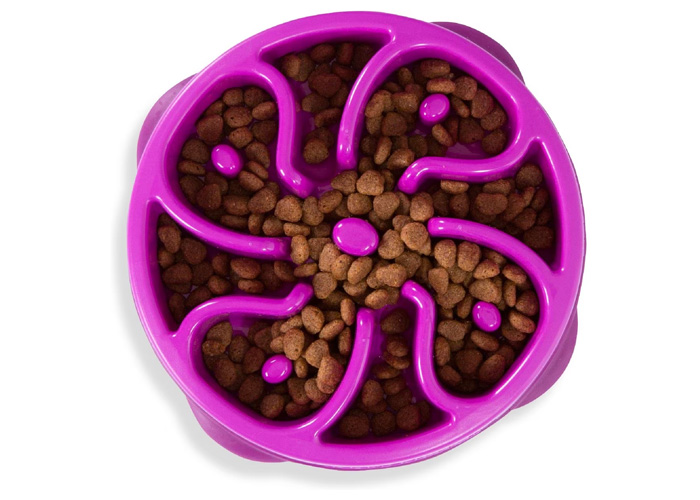
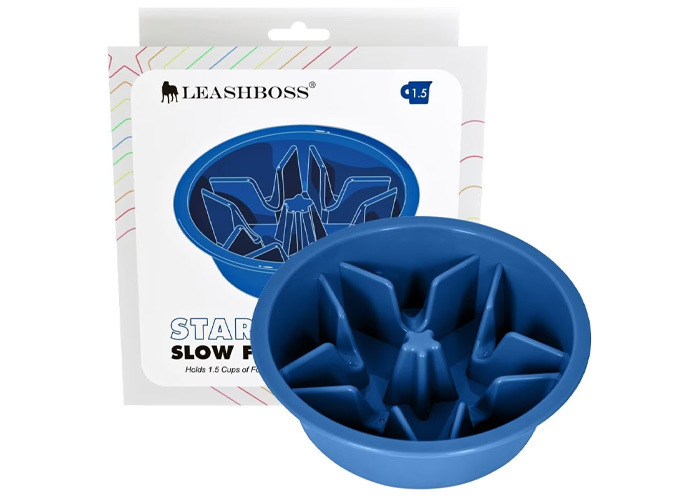
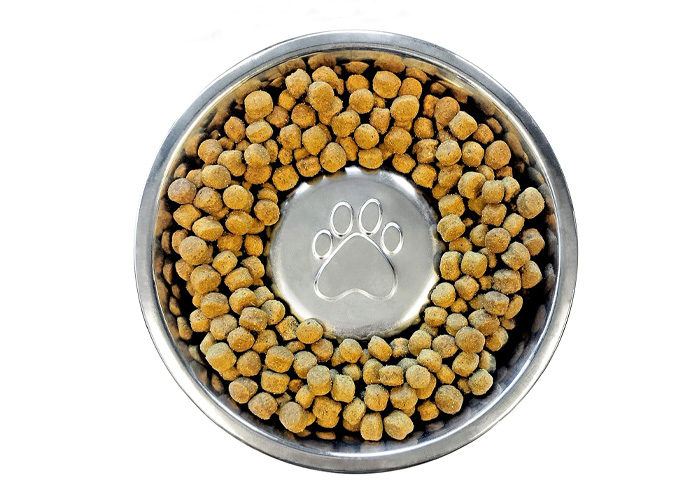
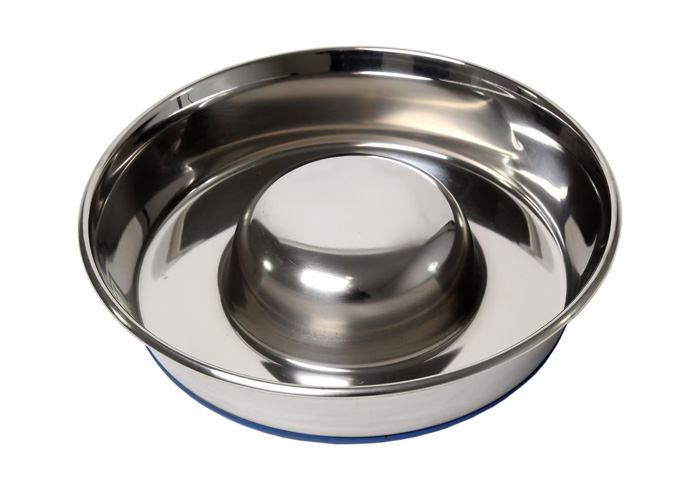
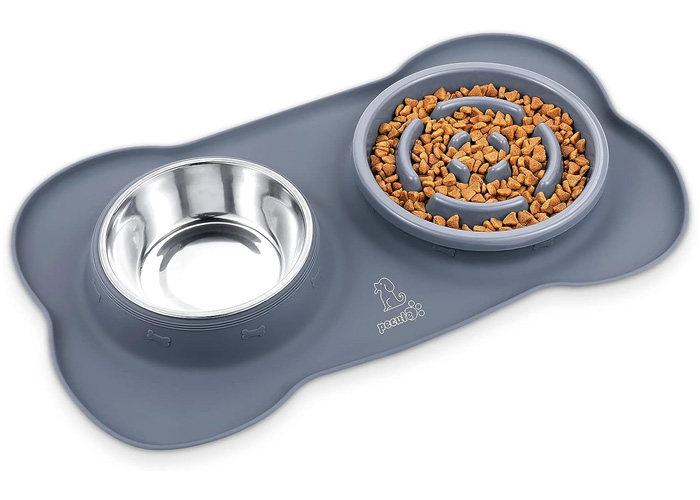
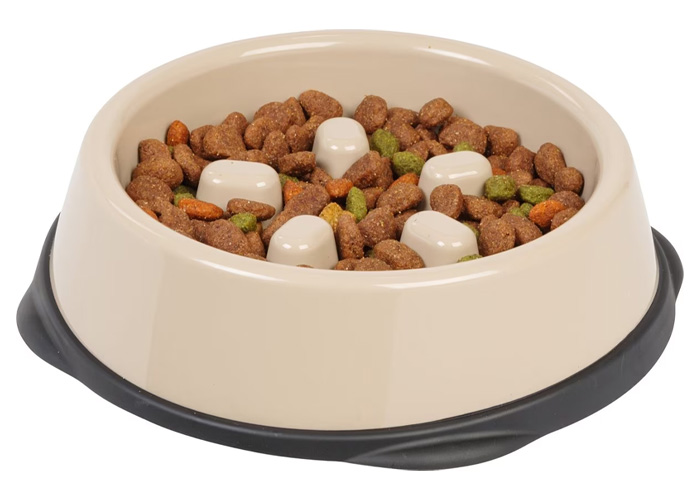
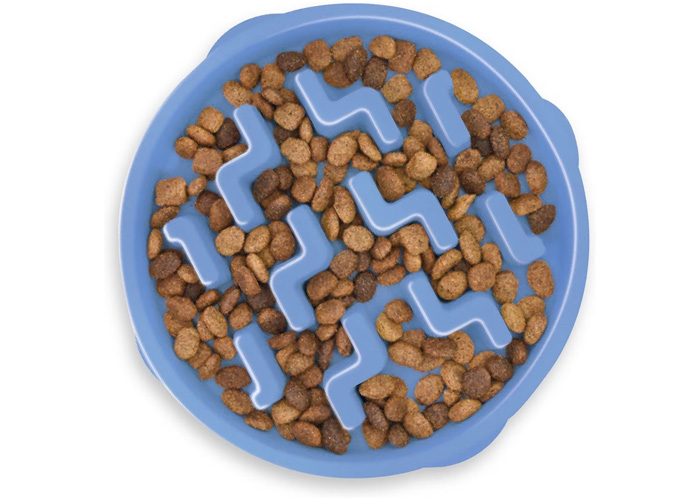
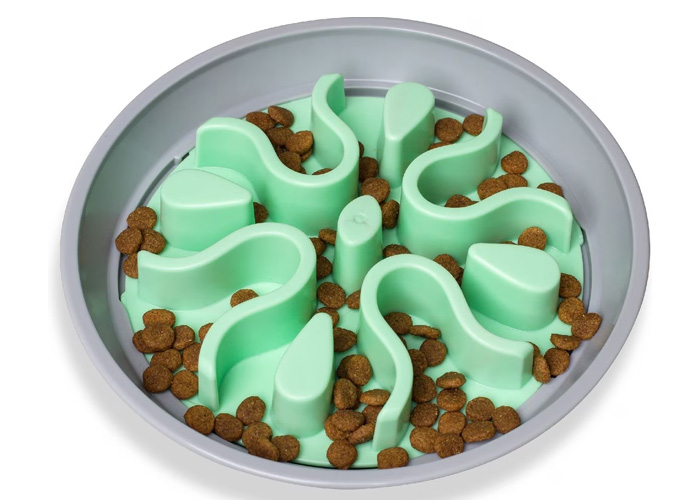
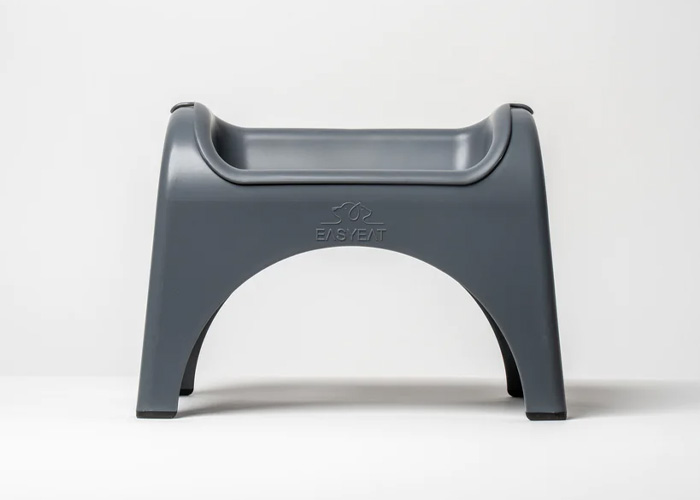



3
0